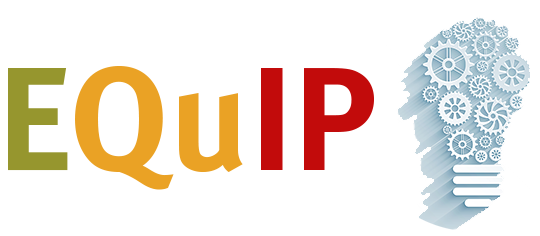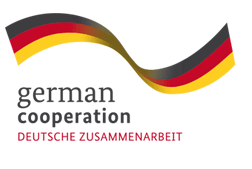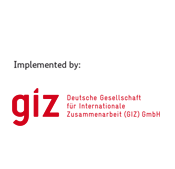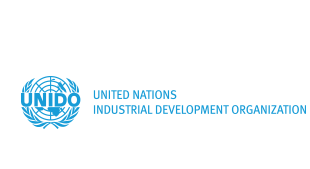A. Introduction to the EQuIP Toolbox
This document gives an introduction to and an overview of the EQuIP Toolbox.
B. Technical Foreword by Tilman Altenburg
To access the technical foreword, please follow this link or download here.
C. Conceptual Framework
The conceptual framework gives the background of the EQuIP Toolbox. It elaborates on the motivation for the development and how it can be placed in the academic discourse.
1. Industrial capacity and growth – Domestic and export dimensions
To give a general overview and perspective on the magnitude, positioning, strengths, competitiveness and performance of a country’s industrial sector. Download here
For a full description of the Tool, please follow this link.
2. Sub-sector competitive performance
To measure the competitiveness of any given sub-sector within manufacturing
To identify those sub-sectors that can contribute most to the corresponding indicator in the industrial capacity and growth tool. Download here
For a full description of the Tool, please follow this link.
3. Industrial and Export Upgrading
To outline methodologies to analyze upgrading processes within a country’s industrial sector at various levels. Download here
For a full description of the Tool, please follow this link.
4. Diversification – Domestic and export dimensions
To help analysts find out whether a country’s industrial and export structures are diversified or rather concentrated in a few activities/sub-sectors and markets. Download here
For a full description of the Tool, please follow this link.
5. Industrial Employment and Poverty Alleviation
To provide analysts in low-income countries with some simple and intuitive diagnostic methods, which can help them to promote a process of structural change that generates broad-based quality employment and contributes to poverty reduction. Download here
For a full description of the Tool, please follow this link.
6.1 Greening Industry: Energy efficiency module
To provide a set of indicators and related analyses, which allow (a) to assess the performance of a country regarding energy efficiency and energy vulnerability of its manufacturing sector and (b) to identify priority sub-sectors with low energy efficiency performance and/or a high vulnerability. Download here
For a full description of the Tool, please follow this link.
6.2 Greening Industry: Material efficiency module
To provide a set of indicators and related analyses, which allow (a) to assess the performance of a country regarding material efficiency of its manufacturing sector and (b) to identify priority sub-sectors with low material efficiency performance. Download here
For a full description of the Tool, please follow this link.
7. Global Value Chains
To enable the analyst to develop an understanding of the position of a country in GVCs, and to assess the developmental potential of a specific sector in GVCs, and outline key strategic industrial policies accordingly. Download here
For a full description of the Tool, please follow this link.
8. Industrial Organization and Firm Profiling at Sub-sector Level
To draw a detailed portrayal of a given industrial sub-sector, using a list of indicators on sub-sector characteristics related to industrial organization and firm profiles. Please note: this tool is at an advanced draft Level. Download here
For a full description of the Tool, please follow this link.
9. Industrial Capabilities Indicators
To capture a country’s different types of industrial capabilities and to facilitate a better understanding of the role they play in industrial production, technological and structural change. Download here
For a full description of the Tool, please follow this link.
10. Gender equality in manufacturing
The aim of this tool is to provide a set of indicators to help analysts understand female participation in manufacturing and structural change, as well as their key determinants, so that policymakers can identify how an industrialization trajectory can become more gender-just. Ultimately, the objective is for women and men to have equal opportunities to contribute to, lead and benefit from structural transformation. Download here
11. Climate Change and manufacturing
The objective of this tool is to present a set of indicators and related analyses which provide a general overview of a country’s vulnerability to climate change and its greenhouse gas emissions focusing on the the manufacturing sector. The analysis relies on best available data from international organizations such as the IEA, World Bank and UNIDO. This component relies upon UNIDO’s expertise in environmental diagnostics and the use of ready-to use secondary data for benchmarking across countries. It seeks to provide policy makers with a tool for understanding their country’s need for climate change adaptation and mitigation. Download here
12. Industry 4.0 and Productivity
Industry 4.0 is the new wave of technological change bringing hopes for accelerated industrialization in many developing countries. The ambition of catching up opportunities are accompanied by concerns about the socio-economic consequences of the adoption of new and smart technologies, including the effect they will have on the displacement of workers and potential job losses as well as the impact on developing countries’ economic development trajectory. This EQuIP module seeks to provide a comprehensive set of empirical instruments that allow the investigation of the industry 4.0 uptake and potential impacts in developing countries. Download here
D. Institutional Setup
This output develops a methodology in the form of a manual for the selection of country-specific institutional setups
E. Industrial Policy Design – Instruments for Implementation
To bring a diverse range of potential industrial policy objectives to light, to assist countries to consider and to define the objectives that are most appropriate for their national context as well as to provide a convincing logic to substantiate their unique structural transformation vision.
Designing a transformative industrial policy package Download here
Annex 1: Table of design Download here
Annex 2: Examples of policy interventions to increase productive activities Download here
F. Crash Course for Tool 1-9
This document is the manual handed out at the EQuIP Trainings. Please note that this is no full reflection of the training and has not been designed as a stand-alone course.





